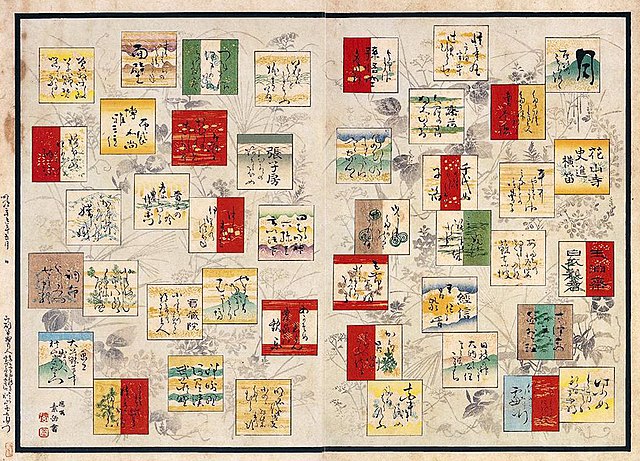One Hundred Aspects of the Moon
One Hundred Aspects of the Moon, or Tsuki no Hyakushi (月百姿) in Japanese, is a collection of 100 ōban size ukiyo-e woodblock prints by Japanese artist Tsukioka Yoshitoshi printed in batches, starting in 1885 until 1892. It represents one of Yoshitoshi's later works. The woodblock prints feature various famous figures, both historical and literary characters, each in a moonlit scene as well as occasional references to poetry.
Image: Titelblad van de serie Honderd aspecten van de maan Rijksmuseum RP P 1993 324
Image: Yoshitoshi 100 Aspects of the Moon Title page
Image: Yoshitoshi 100 Aspects of the Moon 1
Image: Yoshitoshi 100 Aspects of the Moon 2
Ukiyo-e is a genre of Japanese art that flourished from the 17th through 19th centuries. Its artists produced woodblock prints and paintings of such subjects as female beauties; kabuki actors and sumo wrestlers; scenes from history and folk tales; travel scenes and landscapes; flora and fauna; and erotica. The term ukiyo-e translates as 'picture[s] of the floating world'.
Tokugawa Ieyasu established his government in the early 17th century in Edo (modern Tokyo).Portrait of Tokugawa Ieyasu, Kanō school painting, Kanō Tan'yū, 17th century
The Hikone screen may be the oldest surviving ukiyo-e work, dating to c. 1624–1644.
Early woodblock print, Hishikawa Moronobu, late 1670s or early 1680s
Standing portrait of a courtesanInk and colour painting on silk, Kaigetsudō Ando, c. 1705–10








